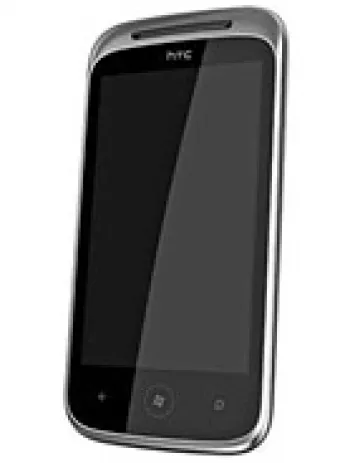
Introduction to HTC TyTN II
Released in 2007, the HTC TyTN II, also known as the HTC Kaiser, was a powerful and feature-rich smartphone for its time. It catered to business professionals and tech enthusiasts who required a device capable of handling work tasks alongside personal use. Let us delve into the various aspects of the HTC TyTN II that made it a notable piece of technology.
Design and Build
The HTC TyTN II sports a robust design with a unique sliding mechanism that reveals a full QWERTY keyboard. This design allows for more efficient typing compared to on-screen keyboards, especially beneficial for business users who frequently send emails or notes. The phone's dimensions are 112 x 59 x 19 mm, and it weighs 190 grams, making it solid yet slightly bulky compared to other models of its time.
Display
The device features a 2.8-inch TFT resistive touchscreen with a resolution of 240 x 320 pixels, offering a simplistic yet functional display for daily operations. The touchscreen supports 65K colors, providing decent color reproduction, albeit not as vivid as modern standards.
Performance
Under the hood, the HTC TyTN II is powered by a Qualcomm MSM7200 chipset featuring a 400 MHz ARM 11 CPU and an Adreno 130 GPU. This combination provides adequate performance for running Windows Mobile 6.0 Professional and various applications suited for productivity and multimedia. With 128MB of RAM, the device runs smoothly, although it may struggle with multitasking heavy applications due to the limited RAM.
Memory and Storage
In terms of storage, the HTC TyTN II came equipped with 256MB of ROM, and storage expansion was possible via a dedicated microSD card slot. This feature was particularly useful for users who needed additional space for their files and media beyond the internal capacity.
Camera Capabilities
The HTC TyTN II features a single 3.15 MP rear camera with autofocus, which can capture decent quality photos and record video. While it doesn’t match up to today’s camera standards, it was sufficient for snapshots and basic video recording. There is also a VGA secondary camera primarily used for video calls.
Battery Life
The phone is powered by a removable Li-Po 1350 mAh battery, offering up to 400 hours of standby time and up to 6 hours of talk time. This was relatively good for its era, ensuring the device could last through a full workday with moderate usage.
Connectivity Options
Connectivity is a strong suit for the HTC TyTN II, supporting GSM and HSPA network technologies. It supports 2G bands (GSM 850/900/1800/1900) and 3G bands (HSDPA 850/1900/2100), allowing for voice calls and basic data speeds alongside a speedy 3.6 Mbps HSPA connection where available. Moreover, it features Wi-Fi 802.11b/g, Bluetooth 2.0, GPS, and A-GPS for location services.
Sound and Multimedia
The device includes a loudspeaker and supports vibration alerts along with downloadable polyphonic and MP3 ringtones. However, it lacks a 3.5mm audio jack, necessitating the use of a USB adapter for standard headphones.
Software and Usability
Running on Microsoft Windows Mobile 6.0 Professional, the HTC TyTN II provided a suite of applications focused on productivity, such as Microsoft Office Mobile, which includes Word, Excel, and PowerPoint. The Pocket Internet Explorer offered web browsing capabilities, and with the inclusion of third-party apps, users could expand its functionalities.
Additional Features
The device features a host of utilities and sensors typical of the time, catering to business and everyday users alike. Despite its discontinued status, the HTC TyTN II remains a testament to HTC's innovative approach during the era, delivering a multi-functional smartphone experience.
Conclusion
Although the HTC TyTN II is considered obsolete today, its impact on the market echoes in the hybrid designs and business-focused smartphones that followed. With a sturdy design, a full QWERTY keyboard, robust connectivity, and Windows Mobile OS, it served as a versatile tool for both work and personal use.
Key Features of HTC TyTN II
- Network Technology: Supports both GSM and HSPA for better connectivity.
- Keyboard: Comes with a full QWERTY keyboard for easier typing.
- Operating System: Runs on Microsoft Windows Mobile 6.0 Professional.
- Display: 2.8 inches TFT resistive touchscreen.
- Camera: 3.15 MP main camera with autofocus and video capability.
- Internal Storage: 128MB RAM, 256MB ROM with expandable microSD slot.
- Connectivity: Includes Wi-Fi 802.11b/g, Bluetooth 2.0, and GPS with A-GPS support.
- Battery: Removable Li-Po 1350 mAh with up to 400 hours standby time.
- Compact Design: Dimensions of 112 x 59 x 19 mm and weight of 190 g.
Drawbacks of HTC TyTN II
- No 3.5mm headphone jack.
- Screen-to-body ratio is relatively low (~36.7%).
- Resistive touchscreen which may not be as responsive as capacitive screens.
- Limited internal memory of 128MB RAM and 256MB ROM.
- Device weight is relatively high at 190g.
- No radio support.
- Device is discontinued and no longer supported.
- Operates on the outdated Windows Mobile 6.0 Professional OS.
- Limited processor speed with a 400 MHz ARM 11 CPU.
- Only VGA resolution front camera for selfies and video calls.













View Also
More Phones
All Rights Reserved +14266 Phones © Mobilawy 2025

























